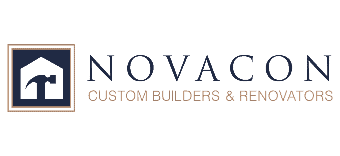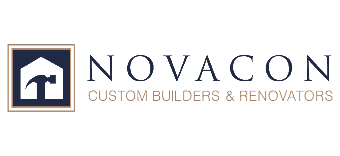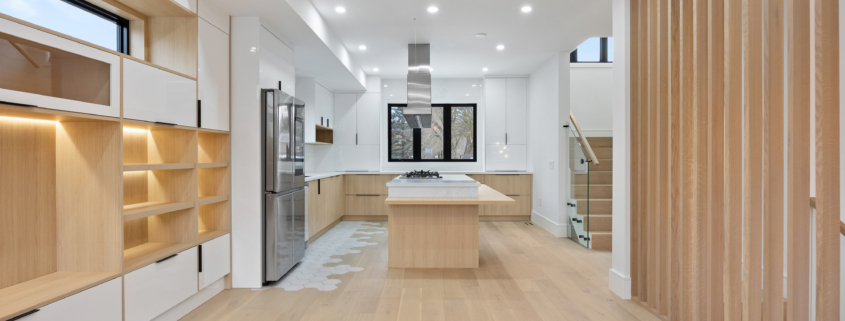Eco-Friendly Home Additions in Toronto: How to Build a Green Extension
With rising energy costs and increasing environmental awareness, more Greater Toronto Area homeowners are choosing sustainable building practices for their home expansions. Green home additions not only reduce your carbon footprint but also provide long-term savings on utility bills while creating healthier living spaces.
Toronto’s unique climate presents both opportunities and challenges for eco-friendly construction. The city’s cold winters and warm summers demand thoughtful design solutions that maximize energy efficiency year-round. Fortunately, modern green building technologies and sustainable materials make it possible to create additions that seamlessly integrate with existing homes while meeting the highest environmental standards.
Building green in the GTA goes beyond just using recycled materials – it’s about creating a comprehensive approach that considers energy efficiency, water conservation, indoor air quality, and sustainable material sourcing. Let’s explore how you can transform your home expansion dreams into an environmentally responsible reality.
Sustainable Design Principles for Toronto Additions
Passive Solar Design and Orientation
The foundation of any eco-friendly home addition begins with thoughtful design that works with Toronto’s natural climate patterns. Passive solar design takes advantage of the sun’s energy to heat and cool your space naturally, reducing reliance on mechanical systems. In Toronto’s latitude, south-facing windows can capture valuable winter sunlight while strategic overhangs prevent overheating during summer months.
Proper orientation becomes especially important during Toronto’s long winter months when daylight hours are limited. Positioning your addition to maximize natural light not only reduces electricity consumption but also helps combat seasonal mood challenges common in northern climates. Large windows on the south side, combined with thermal mass materials like concrete or stone floors, can store heat during the day and release it slowly at night.
Energy-Efficient Building Envelope
Toronto’s extreme temperature variations – from summer highs above 30°C to winter lows below -20°C – make a high-performance building envelope crucial for green additions. This means investing in superior insulation, high-quality windows, and careful attention to air sealing to prevent energy loss.
Modern insulation technologies like spray foam, rigid foam boards, or even recycled denim insulation can significantly outperform traditional materials. The key is achieving thermal bridging prevention, where heat transfer through structural elements is minimized. For custom built homes in Toronto, this often means using advanced framing techniques or insulated concrete forms that create continuous thermal barriers.
Air Sealing and Ventilation Balance
Creating an airtight building envelope must be balanced with proper ventilation to maintain healthy indoor air quality. Toronto’s building codes increasingly recognize the importance of controlled ventilation systems that exchange stale indoor air with fresh outdoor air while recovering heat in the process. Heat recovery ventilators (HRVs) are particularly effective in Toronto’s climate, capturing up to 85% of heat from outgoing air to warm incoming fresh air.
Green Building Materials and Technologies
Locally Sourced and Recycled Materials
Choosing materials with low environmental impact starts with considering their origin and lifecycle. Toronto’s proximity to Canadian forests makes locally sourced wood products an excellent choice for framing and finishing. Local sourcing reduces transportation emissions while supporting regional economies and ensuring materials are suited to local climate conditions.
Recycled and reclaimed materials add character while reducing environmental impact. Reclaimed wood from Toronto’s historic buildings, recycled metal roofing, or salvaged brick can create unique design elements while diverting waste from landfills. These materials often possess superior quality and durability compared to new alternatives, having already proven their longevity in Toronto’s challenging climate.
Low-Impact Concrete and Masonry
Traditional concrete production contributes significantly to carbon emissions, but newer alternatives offer more sustainable options. Fly ash concrete, which incorporates waste from coal power plants, can reduce carbon footprint by up to 30% while often providing superior strength and durability. For Toronto additions, this translates to foundations and structural elements that perform better in freeze-thaw cycles while being more environmentally responsible.
Permeable concrete and paving materials help manage Toronto’s substantial rainfall and snowmelt by allowing water to filter naturally into the ground rather than overwhelming municipal storm systems. This approach aligns with Toronto’s green infrastructure initiatives while reducing flooding risks around your home.
High-Performance Windows and Doors
Windows and doors represent critical components in any energy-efficient addition. Toronto’s climate demands windows that can withstand extreme temperature variations while maximizing energy performance. Triple-glazed windows with low-E coatings and argon gas fills can achieve R-values of 7 or higher, significantly reducing heat loss during winter months.
Modern window frames made from sustainably harvested wood, recycled aluminum, or advanced composite materials offer durability and energy performance. Proper installation with continuous air barriers and thermal breaks ensures these high-performance components deliver their promised energy savings throughout Toronto’s demanding seasonal cycles.
Energy Systems and Renewable Technologies
Solar Power Integration
Toronto receives substantial solar energy potential, particularly during summer months when air conditioning demands peak. Solar panel technology has advanced significantly, with modern systems producing electricity even during cloudy conditions common in Toronto’s climate. Rooftop solar installations on home additions can offset electricity consumption while potentially generating surplus power for the main home.
Battery storage systems are becoming increasingly viable for Toronto homeowners, allowing solar energy captured during peak daylight hours to power homes during evening hours or during grid outages. Provincial incentives and net metering programs make solar installations more attractive financially while contributing to grid stability during peak demand periods.
Geothermal Heating and Cooling
Toronto’s relatively stable underground temperatures make geothermal systems highly effective for heating and cooling additions. Ground-source heat pumps can achieve efficiency ratings of 300-500%, meaning they produce three to five times more energy than they consume. While initial installation costs are higher than conventional systems, the long-term savings and environmental benefits make geothermal attractive for substantial additions.
Geothermal systems work particularly well in Toronto’s climate because they provide consistent heating during cold winters and efficient cooling during hot summers. The underground loop systems can be installed horizontally in larger yards or vertically in smaller spaces, making them adaptable to various property configurations throughout the GTA.
High-Efficiency HVAC Systems
When geothermal isn’t feasible, high-efficiency heating and cooling systems can still provide significant environmental benefits. Cold climate heat pumps designed for Toronto’s winters can operate efficiently at temperatures as low as -25°C, providing both heating and cooling while using significantly less energy than traditional systems.
Radiant floor heating systems paired with high-efficiency boilers create comfortable, even heat distribution while operating at lower temperatures than forced-air systems. This approach is particularly effective in additions with concrete floors that can store and slowly release heat, creating consistent comfort with minimal energy consumption.
Water Conservation and Management
Rainwater Harvesting Systems
Toronto’s annual precipitation provides excellent opportunities for rainwater harvesting, particularly for irrigation and non-potable uses. Simple systems can collect roof runoff in storage tanks for garden watering, while more sophisticated systems can integrate with home plumbing for toilet flushing and laundry uses.
Green roof systems on additions serve multiple purposes – they manage stormwater runoff, provide additional insulation, create habitat for local wildlife, and can even produce food through rooftop gardens. Toronto’s green roof bylaw for large buildings reflects the city’s commitment to sustainable water management practices that homeowners can adopt on a smaller scale.
Greywater Recycling
Greywater systems capture water from sinks, showers, and washing machines for reuse in landscape irrigation. In Toronto’s climate, these systems can significantly reduce municipal water consumption while maintaining healthy lawns and gardens. Modern greywater systems include filtration and treatment components that ensure water quality while maximizing reuse potential.
Permeable paving materials around additions help manage surface water naturally, reducing runoff into Toronto’s storm sewer systems while recharging groundwater supplies. This approach aligns with the city’s wet weather flow management guidelines while creating attractive, functional outdoor spaces.
Low-Flow Fixtures and Smart Water Management
High-efficiency plumbing fixtures in green additions can reduce water consumption by 20-30% without sacrificing performance. Low-flow toilets, water-efficient faucets, and high-efficiency washing machines contribute to overall sustainability while reducing utility costs. Smart water management systems can monitor usage patterns and detect leaks early, preventing water waste and potential damage.
Indoor Air Quality and Healthy Living Spaces
Non-Toxic Materials and Finishes
Creating healthy indoor environments requires careful selection of materials and finishes that don’t off-gas harmful chemicals. Low-VOC paints, formaldehyde-free insulation, and natural wood finishes contribute to better indoor air quality while reducing environmental impact. These choices are particularly important in Toronto’s climate where homes remain sealed for extended periods during winter months.
Natural materials like bamboo flooring, cork surfaces, and wool carpets provide attractive, durable options that contribute to healthy indoor environments. These materials often possess natural antimicrobial properties and superior moisture management characteristics that work well in Toronto’s variable humidity conditions.
Natural Ventilation Strategies
Designing additions to take advantage of natural ventilation reduces reliance on mechanical systems while improving indoor air quality. Cross-ventilation through strategically placed windows can provide cooling during Toronto’s warm summer months while operable skylights create stack ventilation that naturally draws hot air upward and out of living spaces.
During Toronto’s mild spring and fall seasons, natural ventilation can provide comfortable indoor conditions without mechanical heating or cooling. This approach requires careful attention to prevailing wind patterns and seasonal weather conditions to maximize effectiveness throughout the year.
Building Your Green Addition: Planning and Implementation
Working with Green Building Professionals
Successful eco-friendly additions require expertise in sustainable design, energy modeling, and green building practices. Experienced design-build professionals understand how to integrate green technologies while ensuring additions complement existing home architecture and meet local building codes. The investment in professional guidance typically pays dividends through improved performance and avoided costly mistakes.
Toronto’s building permit process increasingly recognizes green building practices, with expedited reviews available for projects meeting certain sustainability criteria. Professional guidance helps navigate these opportunities while ensuring compliance with evolving environmental standards and energy codes.
Certification and Incentive Programs
Various certification programs like LEED for Homes, ENERGY STAR, and Passive House provide frameworks for achieving verified environmental performance. These programs offer third-party validation of green building practices while potentially qualifying for utility rebates, tax incentives, and favorable financing options available to Toronto homeowners.
The investment in certified green building practices often provides returns through reduced utility costs, improved comfort, and increased home value. Toronto’s competitive real estate market increasingly values properties with verified environmental performance and energy efficiency features.
Long-Term Performance and Maintenance
Green additions require ongoing attention to maintain their environmental benefits over time. Regular maintenance of mechanical systems, monitoring of energy performance, and proper care of sustainable materials ensure continued efficiency and environmental benefit. Many green technologies provide monitoring systems that help homeowners track performance and identify maintenance needs before problems develop.
The long-term value of green additions extends beyond environmental benefits to include improved durability, reduced maintenance costs, and enhanced comfort. When properly designed and maintained, sustainable additions often outlast conventional construction while providing superior performance throughout their lifecycle.
Creating Your Sustainable Home Expansion
Building an eco-friendly addition to your Toronto home represents an investment in both your family’s future and environmental responsibility. The combination of energy efficiency, sustainable materials, and healthy indoor environments creates living spaces that perform better while costing less to operate over time.
Success depends on comprehensive planning that considers Toronto’s unique climate challenges and opportunities. From passive solar design to high-performance building systems, every decision contributes to the overall environmental impact and long-term performance of your addition.
The growing availability of green building materials, renewable energy technologies, and sustainable construction practices makes eco-friendly additions increasingly accessible to Toronto homeowners. The key is working with experienced professionals who understand both environmental best practices and the specific requirements of building in the Greater Toronto Area.
Ready to explore how an eco-friendly addition can transform your Toronto home? Novacon Construction is an award-winning design-build contractor specializing in sustainable home additions that seamlessly blend with existing homes while meeting the highest environmental standards. Our expertise in green building practices and deep understanding of Toronto’s climate and building requirements ensure your addition will provide lasting value, comfort, and environmental benefits for years to come.
- How Many Dwellings Can I Build On a Single Lot in Ontario? - October 29, 2025
- Home Renovation and Additions in Toronto: Combining Upgrades for Maximum Impact - October 29, 2025
- What are the Benefits of a Full Height Basement? - October 28, 2025







